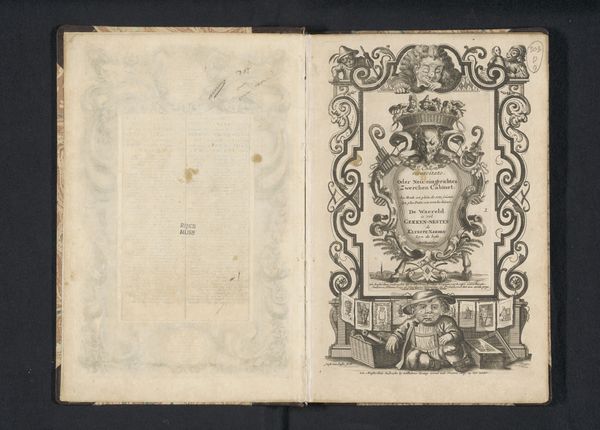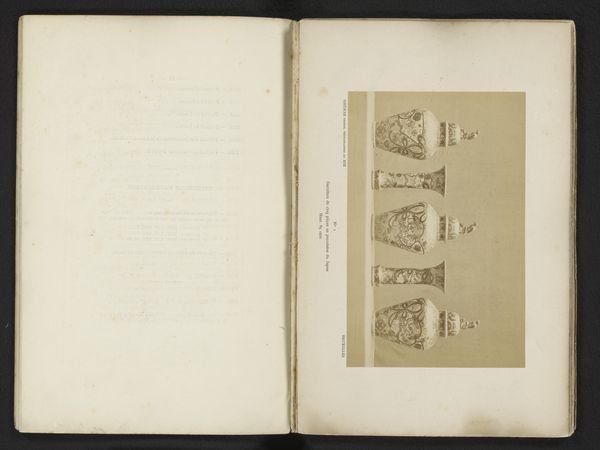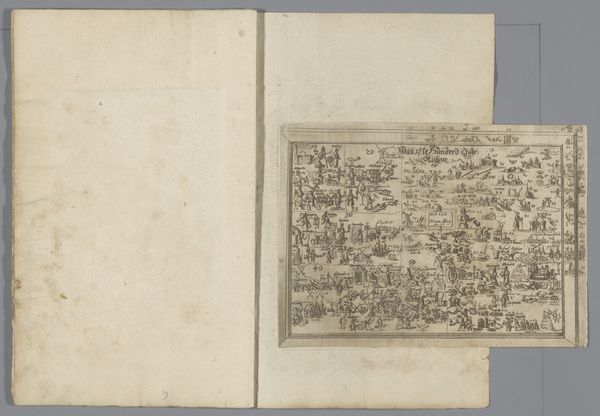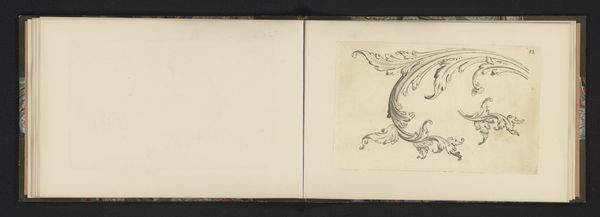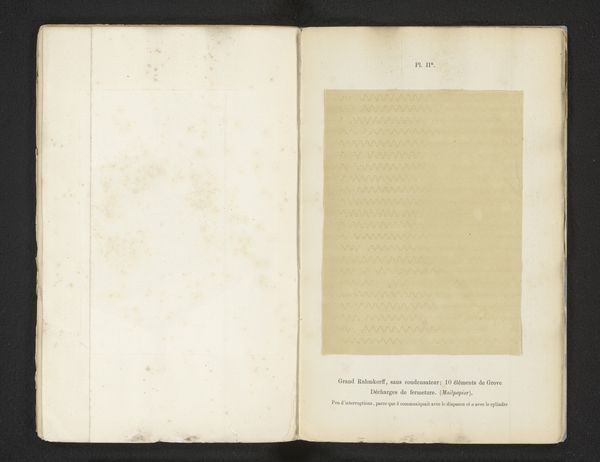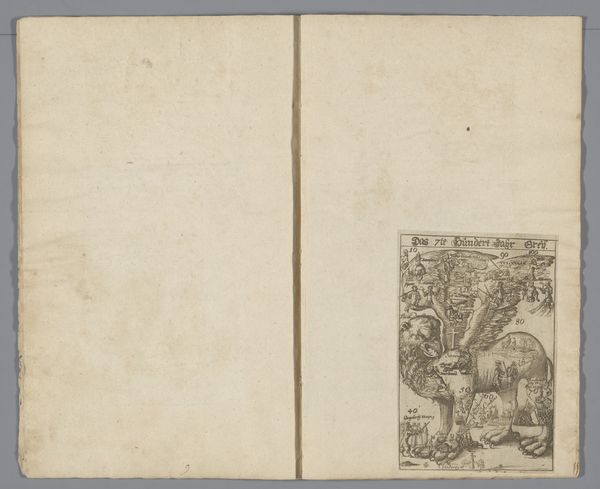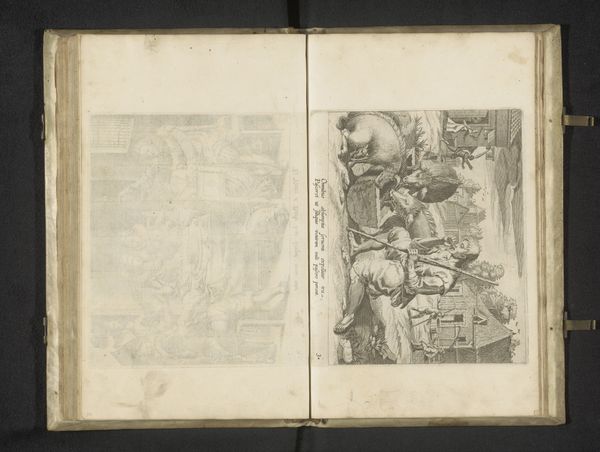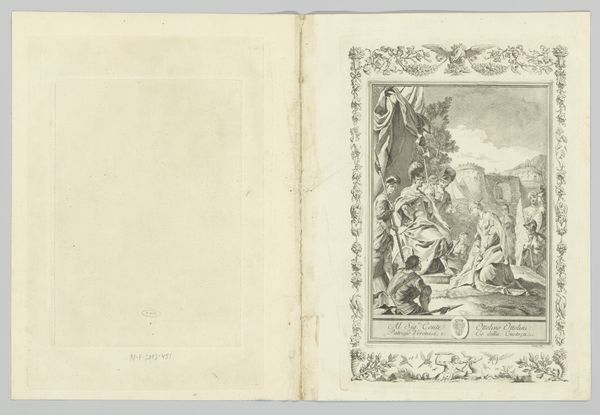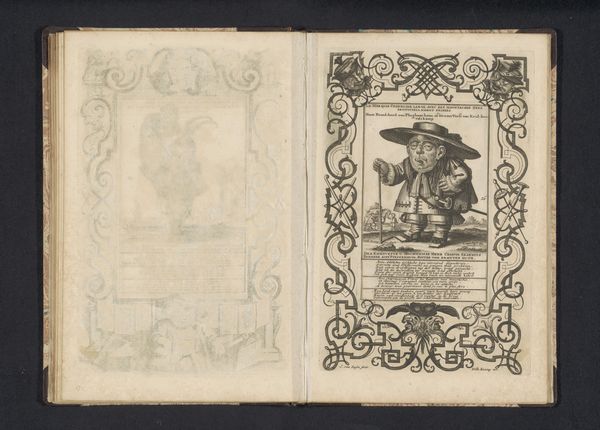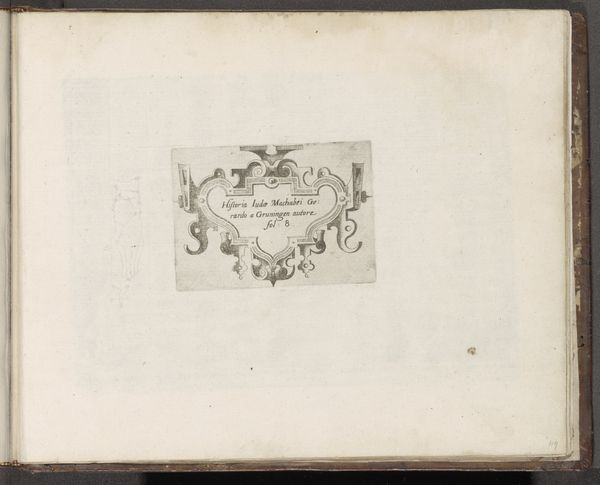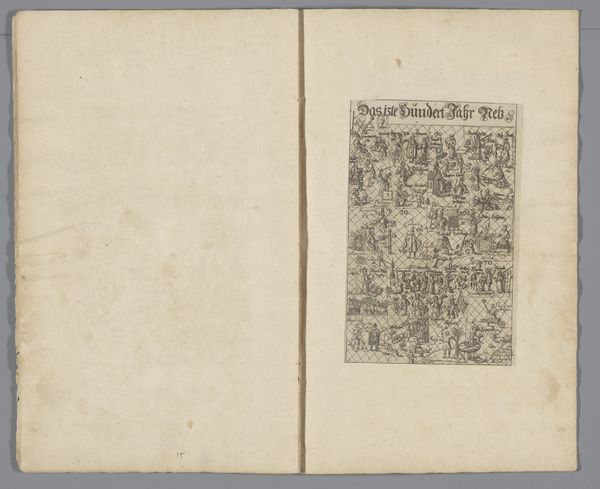
Historische Bilder/ Darinnen Idea Historiae Universalis : Eine kurtze Summarische Abbildung Der fürnehmsten Geist- und Weltlichen Geschichte durch die vier Monarchien ..., door Johannes Buno, Lüneburg: B. Elers, 1672 1667 - 1672
0:00
0:00
print, paper, engraving
#
medieval
#
allegory
#
ink paper printed
# print
#
paper
#
11_renaissance
#
history-painting
#
engraving
#
miniature
Dimensions: height 310 mm, width 190 mm
Copyright: Rijks Museum: Open Domain
Editor: Here we have Johannes Buno's "Historische Bilder/ Darinnen Idea Historiae Universalis…" created around 1672 using engraving on paper. It feels incredibly intricate, like a visual puzzle box. How would you approach analyzing its structure? Curator: Formally, the piece presents a distinct binary—a textual field juxtaposed with an allegorical illustration. Focus first on the composition within the illustration. Observe how the artist employs a serpentine path to guide the eye, effectively dividing the narrative into distinct, chronologically ordered scenes. Notice also the circular forms along the path. Editor: Those circles look like coins. Is the composition entirely successful, or are there any points where the visual structure falters? Curator: The integration of text within the illustrative space creates visual friction. The artist attempts to harmonize textual explanation with allegorical representation, however, the two compete rather than complement. How does the distribution of light and dark contribute to the overall impact? Editor: The engraving seems to utilize darker lines to define the figures, making them stand out against the lighter background, almost creating a sense of depth. Curator: Precisely. This interplay of light and shadow sculpts form and directs our gaze, emphasizing the key narrative elements. How do you see that function with respect to the coins in the engraving? Editor: Considering your points about composition, I notice that the placement of the coin-like circles flattens the depicted scene, as though asserting control of the space. Curator: Precisely. Analyzing the formal elements such as line, form, and composition allows us to dissect the artwork's inherent structure. Such decoding informs our understanding of not only this piece, but also visual communication broadly. Editor: Thanks for the in-depth walkthrough, viewing art this way really changes how I understand images.
Comments
No comments
Be the first to comment and join the conversation on the ultimate creative platform.
